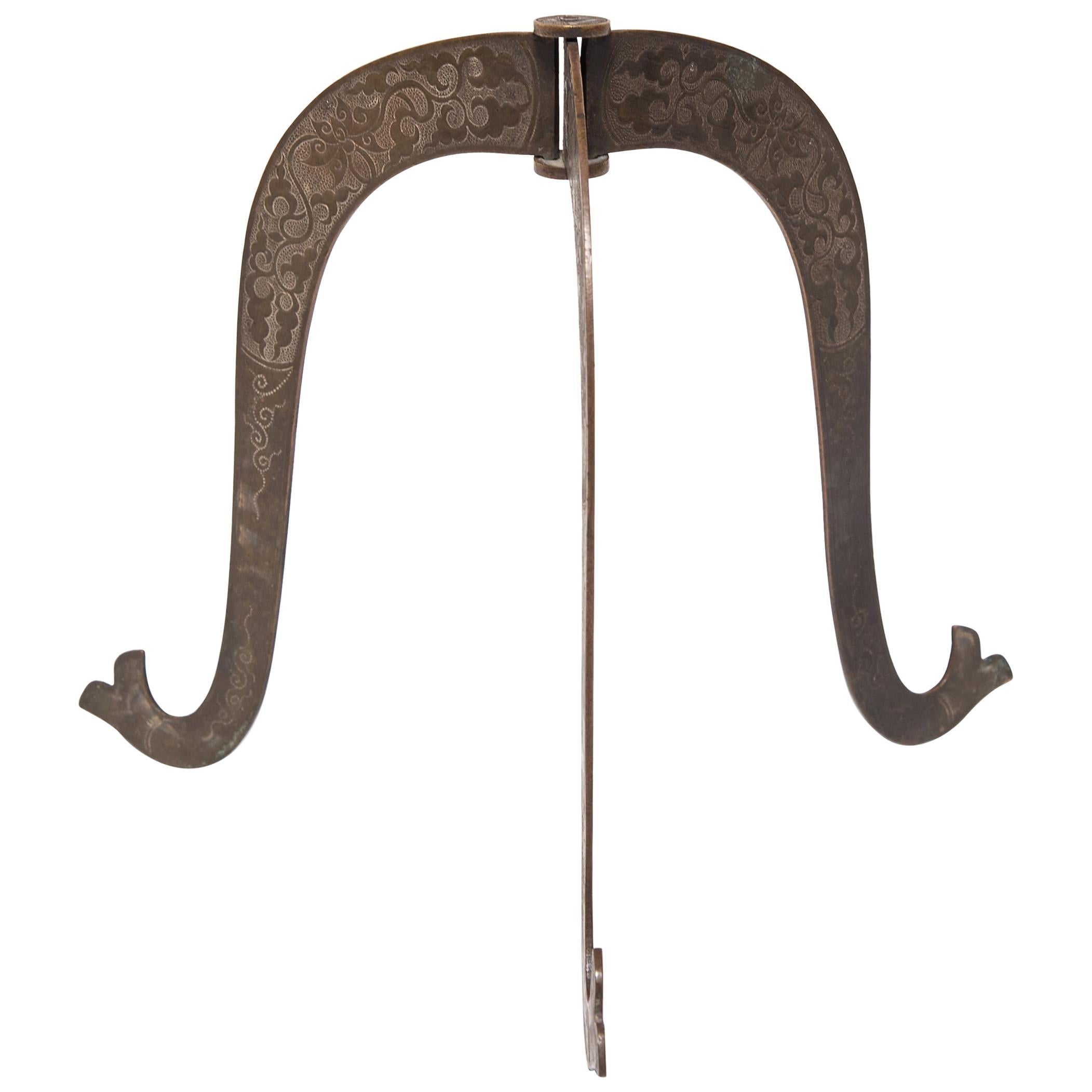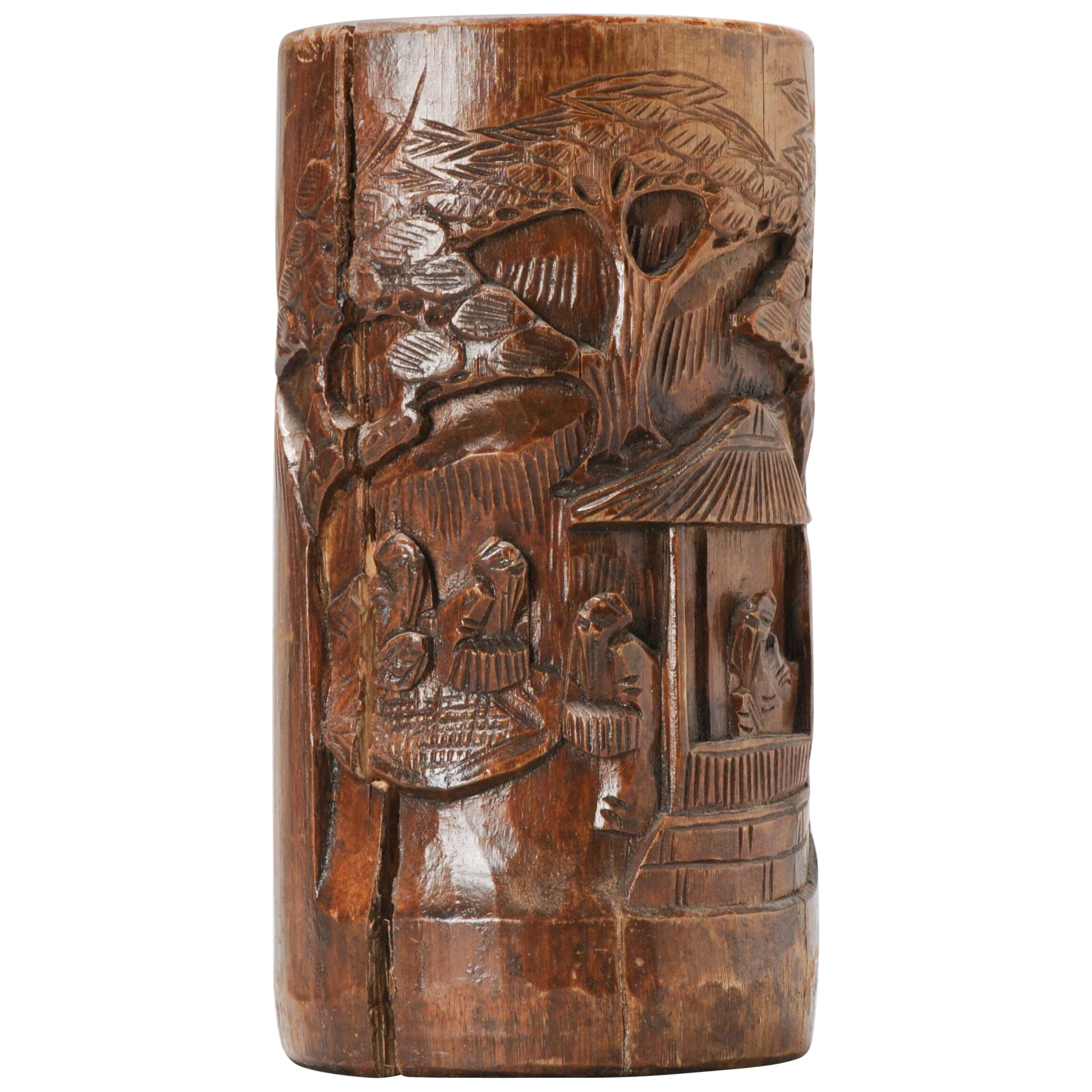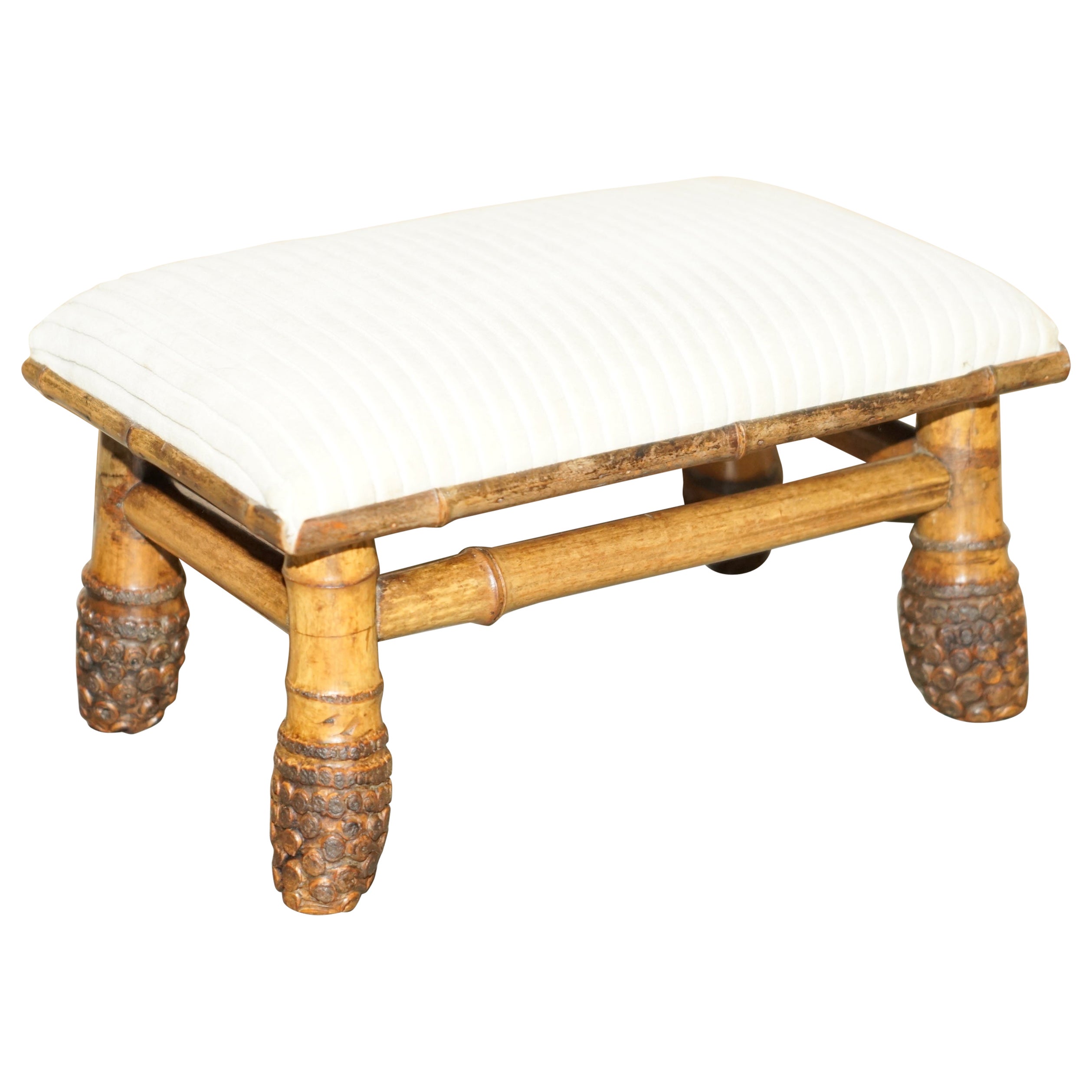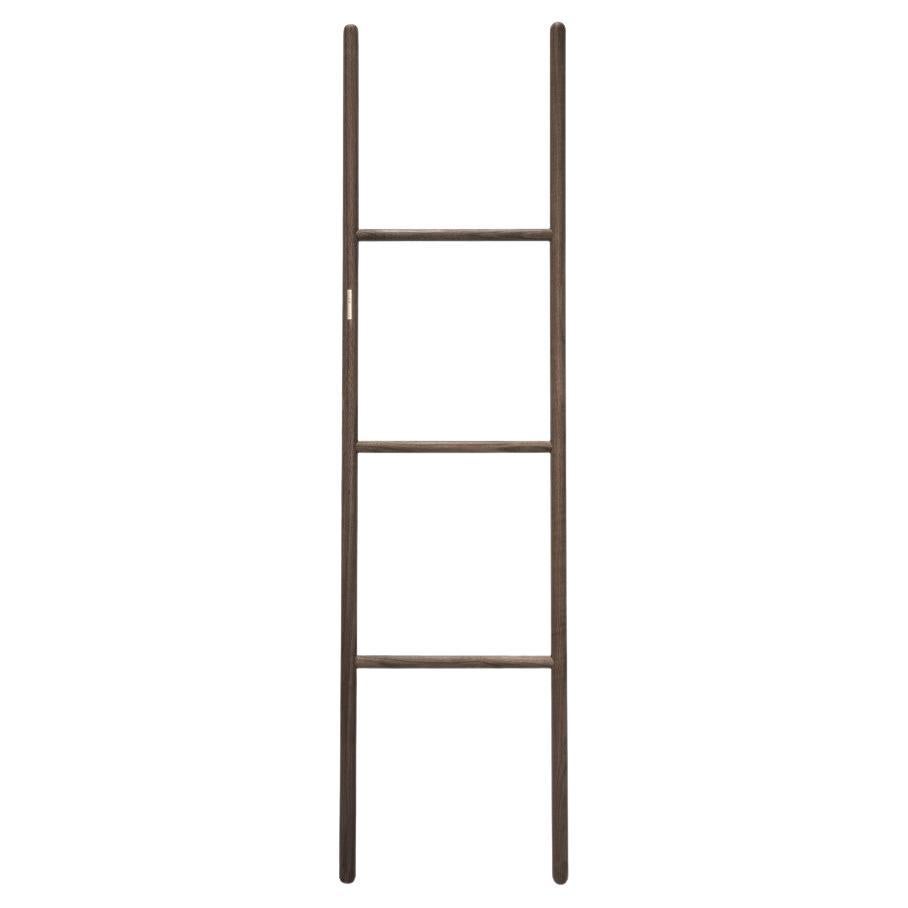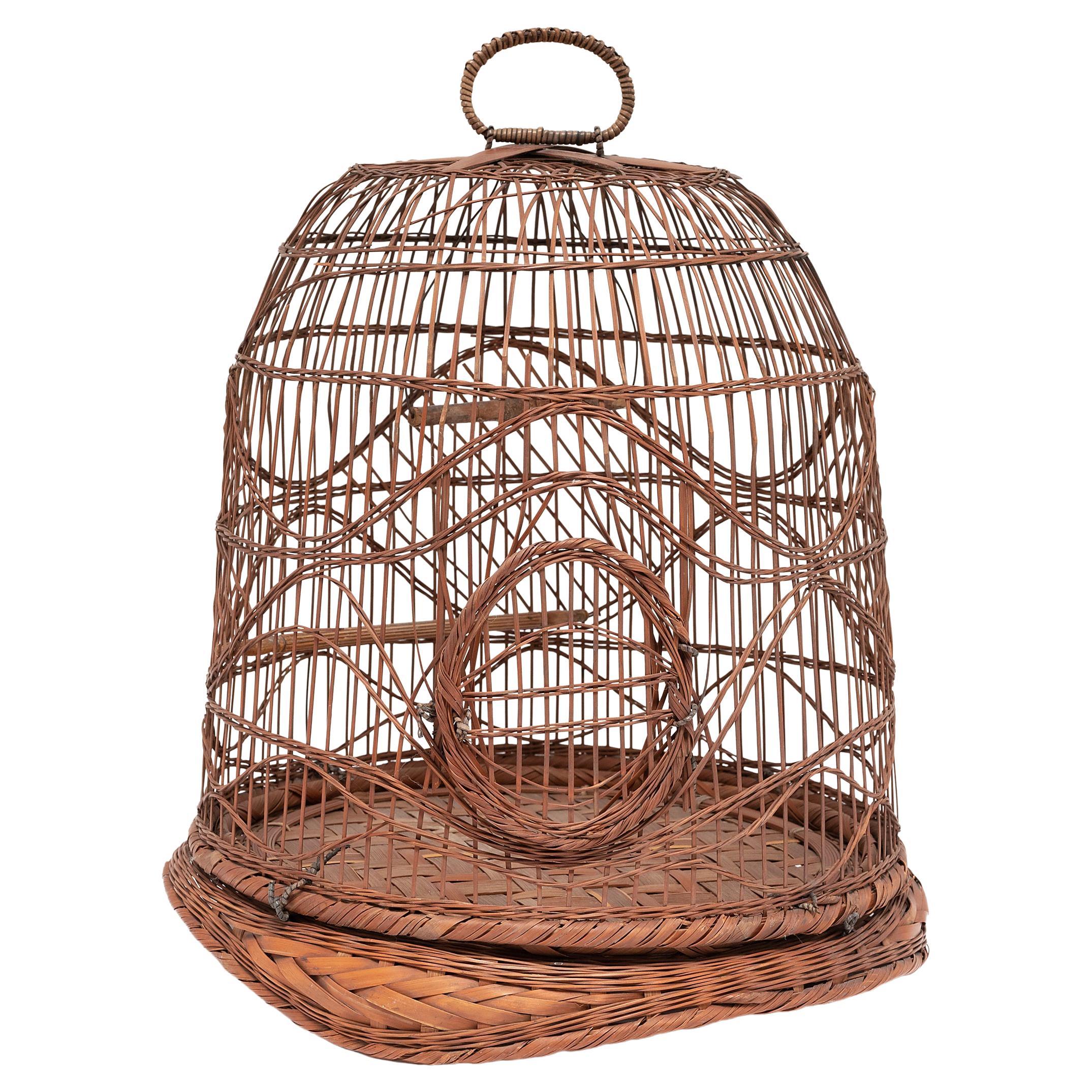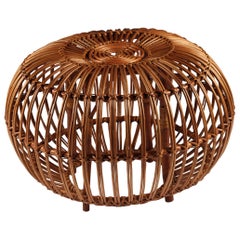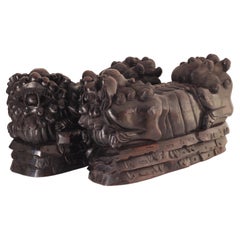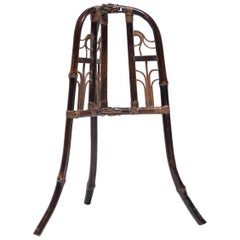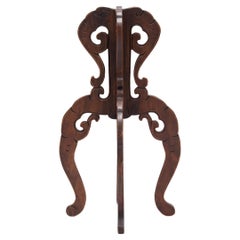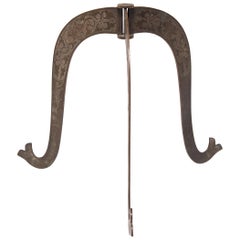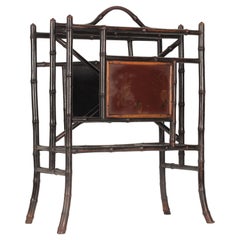
Victorian Aesthetic Movement Bamboo Magazine or Newspaper Rack Boho chic style
View Similar Items
Want more images or videos?
Request additional images or videos from the seller
1 of 21
Victorian Aesthetic Movement Bamboo Magazine or Newspaper Rack Boho chic style
About the Item
- Dimensions:Height: 22.05 in (56 cm)Width: 16.93 in (43 cm)Depth: 9.65 in (24.5 cm)
- Style:Aesthetic Movement (Of the Period)
- Materials and Techniques:
- Place of Origin:
- Period:
- Date of Manufacture:1890s
- Condition:Wear consistent with age and use.
- Seller Location:London, GB
- Reference Number:1stDibs: LU2868323228062
About the Seller
5.0
Gold Seller
These expertly vetted sellers are highly rated and consistently exceed customer expectations.
Established in 2015
1stDibs seller since 2017
169 sales on 1stDibs
Typical response time: 1 hour
More From This SellerView All
- Boho Chic Style or Modern Farmhouse Wicker Ottoman, Stool or Side TableLocated in London, GBA vintage midcentury, Boho Chic Style round wicker ottoman, stool or side table in good condition. A completely versatile piece that adds warmth and a handmade craftsmanship to a sch...Category
Mid-20th Century Italian Mid-Century Modern Stools
MaterialsCane, Wicker
- A pair of 19th Century carved Foo temple dogs or Chinese guardian LionsLocated in London, GBChinese guardian lions, or imperial guardian lions, are a traditional Chinese architectural ornament. Typically made of stone, they are also known as stone lions or shishi (石獅; shíshī). They are known in colloquial English as lion dogs or foo dogs / fu dogs. The concept, which originated and became popular in Chinese Buddhism, features a pair of highly stylized lions—often one male with a ball and one female with a cub—which were thought to protect the building from harmful spiritual influences and harmful people that might be a threat. Used in imperial Chinese palaces and tombs, the lions subsequently spread to other parts of Asia including Japan (see komainu), Korea, Philippines, Tibet, Thailand, Myanmar, Vietnam, Sri Lanka, Nepal, Cambodia, Laos, and Malaysia. There has been extensive interaction between Chinese mythology and Confucianism, Taoism, and Buddhism. Elements of pre-Han dynasty mythology such as those in Classic of Mountains and Seas were adapted into these belief systems as they developed (in the case of Taoism), or were assimilated into Chinese culture (in the case of Buddhism). Elements from the teachings and beliefs of these systems became incorporated into Chinese mythology. For example, the Taoist belief of a spiritual Paradise became incorporated into mythology as the place where immortals and deities used to dwell. Sometimes mythological and religious ideas have become widespread across China's many regions and diverse ethnic societies. In other cases, beliefs are more limited to certain social groups, for example, the veneration of white stones by the Qiang. One mythological theme that has a long history and many variations involves a shamanic world view, for example in the cases of Mongolian shamanism among the Mongols, Hmong shamanism among the Miao people, and the shamanic beliefs of the Qing dynasty from 1643 to 1912, derived from the Manchus. Politically, mythology was often used to legitimize the dynasties of China, with the founding house of a dynasty claiming a divine descent. Mythology and philosophy. Further information: Chinese philosophy True mythology is distinguished from philosophical treatises and theories. Elaborations on the Wu Xing are not really part of mythology, although belief in five elements could appear. The Hundred Schools of Thought is a phrase suggesting the diversity of philosophical thought that developed during the Warring States of China. Then, and subsequently, philosophical movements had a complicated relationship with mythology. However, as far as they influence or are influenced by mythology, divides the philosophical camps into two rough halves, a Liberal group and a Conservative group. The liberal group being associated with the idea of individuality and change, for example as seen in the mythology of divination in China, such as the mythology of the dragon horse that delivered the eight bagua diagrams to Fu Xi, and methods of individual empowerment as seen in the Yi Jing (Book of Changes). The Liberal tendency is towards individual freedom, Daoism, and Nature. The relationship of the Conservative philosophies to mythology is seen in the legendary Nine Tripod Cauldrons, mythology about the emperors and central bureaucratic governance, Confucianism, written histories, ceremonial observances, subordination of the individual to the social groups of family and state, and a fixation on stability and enduring institutions. The distinction between the Liberal and Conservative is very general, but important in Chinese thought. Contradictions can be found in the details, however these are often traditional, such as the embrace by Confucius of the philosophical aspects of the Yi Jing, and the back-and-forth about the Mandate of Heaven wherein one dynasty ends and another begins based according to accounts (some of heavily mythological) where the Way of Heaven results in change, but then a new ethical stable dynasty becomes established. Examples of this include the stories of Yi Yin, Tang of Shang and Jie of Xia or the similar fantastic stories around Duke of Zhou and King Zhou of Shang. Mythology exists in relationship with other aspects of society and culture, such as ritual. Various rituals are explained by mythology. For example, the ritual burning of mortuary banknotes (Hell Money), lighting fireworks, and so on. A good example of the relationship of Chinese mythology and ritual is the Yubu, also known as the Steps or Paces of Yu. During the course of his activities in controlling the Great Flood, Yu was supposed to have so fatigued himself that he lost all the hair from his legs and developed a serious limp. Daoist practitioners sometimes incorporate a curiously choreographed pedal locomotion into various rituals. Mythology and practice, one explains the other: in these rituals, the sacred time of Yu merges with the sacral practice of the present. Various ideas about the nature of the earth, the universe, and their relationship to each other have historically existed as either a background or a focus of mythologies. One typical view is of a square earth separated from a round sky by sky pillars (mountains, trees, or undefined). Above the sky is the realm of Heaven, often viewed of as a vast area, with many inhabitants. Often the heavenly inhabitants are thought to be of an "as above so below" nature, their lives and social arrangements being parallel to those on earth, with a hierarchical government run by a supreme emperor, many palaces and lesser dwellings, a vast bureaucracy of many functions, clerks, guards, and servants. Below was a vast under ground land, also known as Diyu, Yellow Springs, Hell, and other terms. As time progressed, the idea of an underground land in which the souls of the departed were punished for their misdeeds during life became explicit, related to developments in Daoism and Buddhism. The underground world also came to be conceived of as inhabited by a vast bureaucracy, with kings, judges, torturers, conductors of souls, minor bureaucrats, recording secretaries, similar to the structure of society in the Middle Kingdom (earthly China). Chinese temple Dogs...Category
Antique 1860s Chinese Chinese Export Sculptures and Carvings
MaterialsHardwood
- Faux Bamboo Walnut Framed Mirror Made in England 1800’s in Boho Chic StyleLocated in London, GBA Faux Bamboo Walnut mirror of beautiful warm tones, together with it’s original hanging chain in the Chinoiserie/Aesthetic Movement style. Refreshed and revived by professional rest...Category
Antique 1860s English Chinoiserie Wall Mirrors
MaterialsGlass, Walnut
- Boho Chic Style Wicker Ottoman, Stool or Side Table Italy 1960’s attr AlbiniLocated in London, GBA vintage midcentury round wicker ottoman, stool or side table in good condition. A completely versatile piece that adds warmth and a handmade craftsmanship. In the era of flower pow...Category
Mid-20th Century Italian Mid-Century Modern Stools
MaterialsWicker
- Boho Chic Style Faux Bamboo Walnut Framed Mirror Made in France in mid 1800’sLocated in London, GBA faux bamboo walnut mirror of beautiful warm tones, together with it’s original hanging chain in the Chinoiserie/Aesthetic Movement style. Refreshed and revived by professional rest...Category
Antique 1860s French Chinoiserie Wall Mirrors
MaterialsGlass, Walnut, Mirror
- Boho Chic Style Wicker & Cane Ottoman, Stool or Side Table made in Italy 1950’sLocated in London, GBA vintage Mid-Century Modern round wicker ottoman, stool or side table. A completely versatile piece that adds warmth and a handmade craftsmanship. This is one of 14 pieces we curren...Category
Mid-20th Century Italian Mid-Century Modern Stools
MaterialsWicker
You May Also Like
- Chinese Bamboo Folding Hat Stand, circa 1850Located in Chicago, ILIn 19th century China, government officials wore different hats to show their various ranks of office, the styles and designs changed depending on the season. This one-of-a-kind fold...Category
Antique Mid-19th Century Chinese Qing Hat Racks and Stands
MaterialsBamboo
- Chinese Cloud-Form Hat Stand, c. 1900Located in Chicago, ILOut of context, this carved wood hat stand has a curious, octopus-like appearance. Carved with cloud-form flourishes, the folding hat stand displays th...Category
Antique Late 19th Century Chinese Qing Hat Racks and Stands
MaterialsWood
- Chinese Baitong Etched Folding Hat Stand, c. 1850Located in Chicago, ILA Qing dynasty official proclaimed his rank through badges and accessories including his hat. This ingenious folding white brass hat stand, covered in intricately etched scrollwork, ...Category
Antique Mid-19th Century Chinese Qing Hat Racks and Stands
MaterialsBrass
- 20th Century French Books Imitation Magazine RackLocated in LEGNY, FR20th century French book binding imitation magazine rack from the 1950s. Gilted brass base. Very original item.Category
Vintage 1950s French Magazine Racks and Stands
MaterialsWood
- Aesthetic Movement Bamboo and Faux Lacquer Coal ScuttleLocated in New York, NYJaponaisme bamboo and faux lacquer tiered coal scuttle with paper rack above angled scuttle door with parquetry, bone and mother-of-pearl inlaid Japanese figure opening to reveal a l...Category
Early 20th Century Aesthetic Movement Antiquities
MaterialsBamboo, Paint
$650 Sale Price23% Off - Late 19th Century Bamboo & Cane Victorian Bedroom Chair, C.1890Located in San Francisco, CALate 19th century bamboo & cane Victorian bedroom chair, C.1890 Outstanding English Victorian bamboo chair with woven cane seat Hand painted deta...Category
Antique Late 19th Century English Chinese Export Chairs
MaterialsBamboo, Cane
Recently Viewed
View AllMore Ways To Browse
Aesthetic Style Furniture
The Aesthetic Movement
Antique House Designs
The Magazine Table
Aesthetic Style Table
Exhibition Stand
Chic Antique
Antique Chic Furniture
Chic Antique Furniture
English Aesthetic Furniture
Natural Chic Furniture
English Aesthetic Movement
Magazine Table Rack
English Aesthetic Movement Furniture
Table And Magazine Rack
Aesthetic Movement Japanese
Victorian Japanese
Wallpaper Magazine


